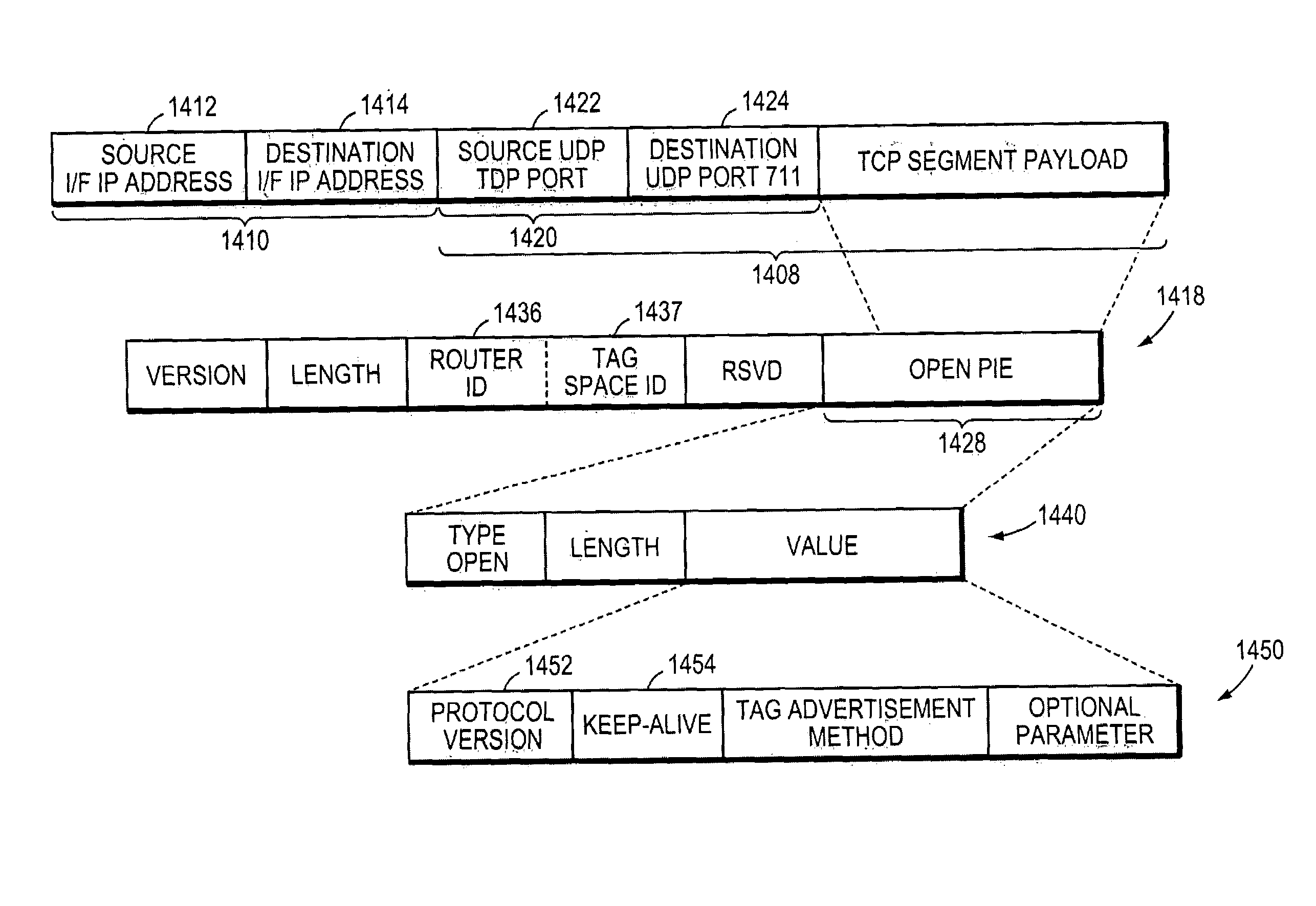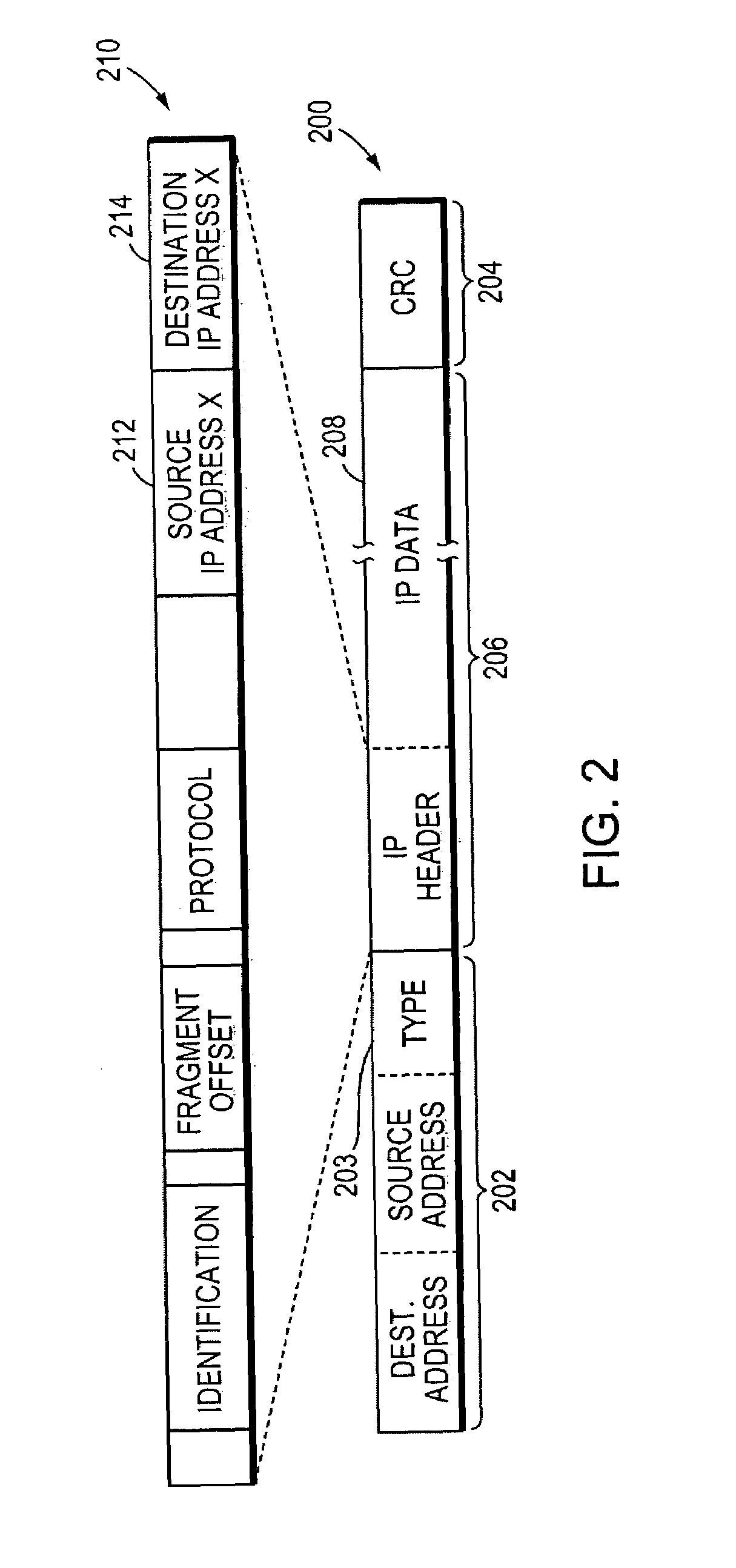Discovery and tag space identifiers in a tag distribution protocol (TDP)
a technology of discovery and tag space, applied in the field of communication networking, can solve the problems of slowing down the movement of packets through the network, large forwarding table, and large expenditure of valuable router processing resources
- Summary
- Abstract
- Description
- Claims
- Application Information
AI Technical Summary
Benefits of technology
Problems solved by technology
Method used
Image
Examples
Embodiment Construction
[0050]FIG. 8 is a block diagram of a tag-switching router 100 incorporating the invention. The operation of a tag-switching router is described in the above-cited Rekhter et al. application. Although router configurations vary widely, FIG. 8 depicts a typical approach. The tag-switching router 100 is comprised of a forwarding engine 70 and a plurality of interface (I / F) modules 62, 64, 66 which send and receive communications packets to and from remote locations. The forwarding engine 70 is a high-performance processor that controls the routing of packets through the tag-switching router 60. Instructions executed by the forwarding engine 70 are stored in a persistent storage device, such as a magnetic disk media, EPROM or flash EPROM memory, and executed from a fast and volatile semiconductor storage device, these storage devices being generally represented by memory circuitry element 71. The I / F modules 62, 64, 66 include a similar high-performance processor 72, 74, 76 and associat...
PUM
 Login to View More
Login to View More Abstract
Description
Claims
Application Information
 Login to View More
Login to View More - R&D
- Intellectual Property
- Life Sciences
- Materials
- Tech Scout
- Unparalleled Data Quality
- Higher Quality Content
- 60% Fewer Hallucinations
Browse by: Latest US Patents, China's latest patents, Technical Efficacy Thesaurus, Application Domain, Technology Topic, Popular Technical Reports.
© 2025 PatSnap. All rights reserved.Legal|Privacy policy|Modern Slavery Act Transparency Statement|Sitemap|About US| Contact US: help@patsnap.com



